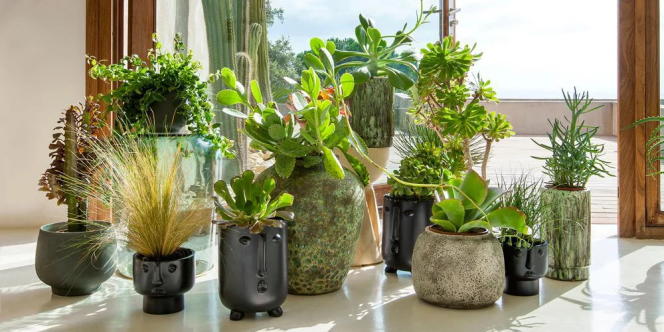THE MORNING LIST
Does not have the green thumb that wants. But, with basic principles and a handful of careful care, maintaining a houseplant is within everyone’s reach. Here are our tips for cultivating a secret garden and an urban jungle, at the office, in your living room or on your windowsill.
Identify so as not to crash
Knowing the name of the plant with which you live is essential because, unless you have a green thumb, and this innate sense for pifometric maintenance that works miracles like envy, each plant has its specific needs. Failing to have been offered or purchased with his “identity card”, and in order to avoid premature drowning, a frank crossing of the desert or an overexposure, start by identifying him without losing his Latin. And for good reason, they all owe him his little name.
A little digital boost for this identification? Thanks to “facial” recognition, the Planta, Plant Parent, Blossom, PictureThis, Monstera and NatureID apps all offer free identification of plants, and provide advice and maintenance reminders, for some paying. All you have to do is draw a portrait of them and immediately know their name as well as their particularities and needs,Aloe aristata à la “ZZ” (for Zamioculcas zamiifolia), passing through the ficus elastica or the Maranta kerchoveana (or “plant that prays”). The latter is thus described as “thirsty” And “chilly”has a predilection for shade and rainwater, and likes moist but not soggy soil, and cuttings require “dig up the plant to detach the rhizome with at least one leaf”we learn about Monstera, which claims more than 89,000 pampered plants.
Do some spring cleaning
After a winter spent very warm, often far too dry and with little light, it’s time to revitalize your green companions – aromatics, flowering or foliage plants, cacti or even succulents. Despite a season conducive to vegetating, some will have reached critical size, squeezed into their pot as if in too tight clothing: the plant capsizes or the root network has conquered so much space that the soil has completely disappeared, at the base or in the surface. Repotting with a brand new substrate is essential. If the plant does not require repotting, it may be useful to carry out a top dressing, namely replacing the top 2 to 5 centimeters of soil with new one to bring new nutrients to the plant and dissipate any crust of soil. which formed.
You have 71.6% of this article left to read. The following is for subscribers only.
